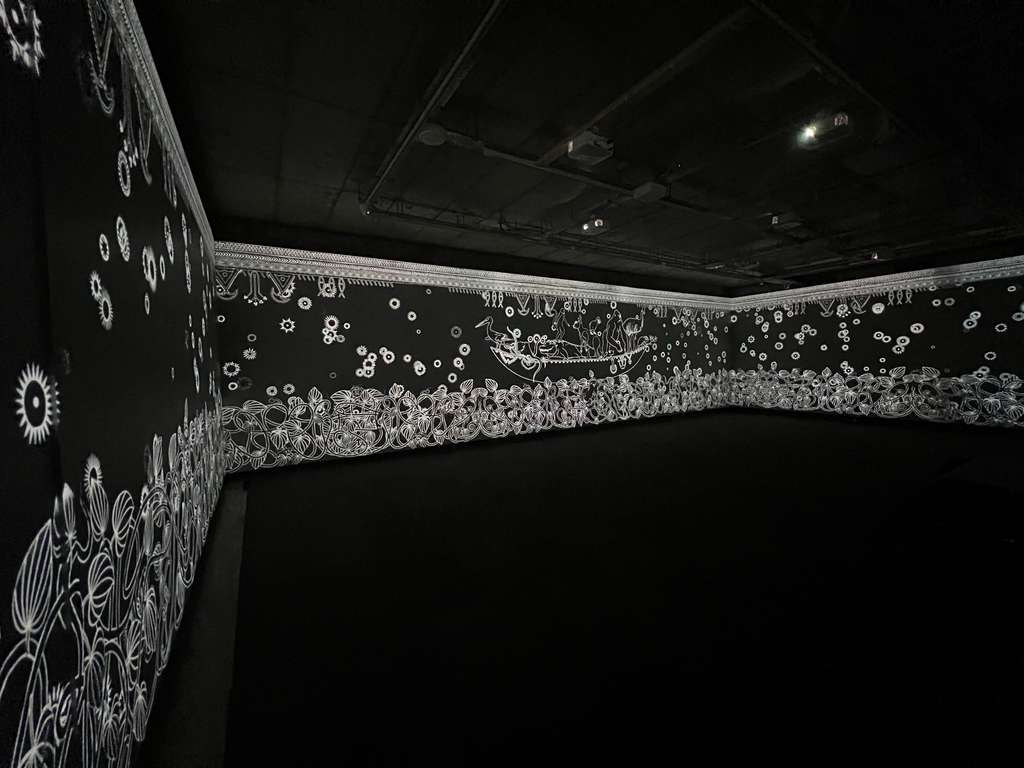@dbni is Full hd enough or you need all outputs to be 4k ?
Hello,
I am currently using M4 Mac Mini’s for multiple video output from Isadora. They represent a Mac solution with a lower price point but great performance and flexibility. I recently set up an eight projector blend (8 x 1080p Benq short throw- shown in image) using just Mac Mini’s. The current M4 Mac Mini allows 3 video outputs - so your set up could include 2 linked Mac Mini with capacity for a control monitor.

I also use a Mac Studio M2 Max Ultra it has capacity of 8 video outputs.
Best wishes
Russell
Hi,
Another option is through NDI. BirdDog Play is reasonably priced, and with a single cable and a switch, you can send the streams to all four outputs. I've only worked with one output through BirdDog Play, and the results were good. Perhaps the most problematic aspect is assigning NDI streams when you start the setup. BirdDog support may be able to help with this.
That's an idea.
Best
The Apple M2 Max and M3 Max chips can also support four external displays, but the new M4 Max chip offers even higher resolutions and refresh rates for these displays.
@mark_m said:
Viva the Werkstatt! Bring on the next one!!
I know, I hope we can manage to do another one again soon.
John and I met at a Werkstatt in Berlin, and discovered many friends and circuses in common.
That's the value of the physical connection! Viva the Werkstatt! Bring on the next one!!
@mark_m said:
Depending on when your installation is, I could lend you an FX4 and a Brightsign if we could figure out how to get it from London to Oulu and back again.
I just want to take a moment to highlight this example of the helpful and selfless nature of our community. It truly warms my heart. Y'all are fantastic. <3
@dbini
Hi John,
You could use a Datapath FX4 and a Brightsign media player. You can programme the setup with your Mac and their Wall Designer software, then play the film back from a Brightsign or similar media player. That'd be pretty reliable.
The FX4 does 4K input and 4 x 1080p output.
Depending on when your installation is, I could lend you an FX4 and a Brightsign if we could figure out how to get it from London to Oulu and back again.
Hi folks,
What's the current recommended hardware setup for a 4 projector output? I'm making a movie to be installed in a tight space, so will probably require edge blending 4 short throw projectors into one image. (I usually use Mac) As far as I can tell, quad display facility on the new MacBooks is possible with the M4 Max, but is limited to 3 x external displays and the laptop display, so I would need to explore a PC option or some kind of external hardware solution.
My budget is small, but I would love to find a solution that is reliable, running 6 hours a day over 2 weeks.
Here's an article on how to use the Set and Get Global Values actors: https://support.troikatronix.com/support/solutions/articles/13000014936-using-the-global-value-actors
Additionally, if you take a look at the Isadora 4 Manual, you'll find:
- The Get Global Values actor on pages 501-502
- The Set Global Values actor on pages 719-720
As you're new to Isadora, I'd also recommend checking out our Isadora Mini-Tutorials playlist on the TroikaTronix YouTube Channel. There you can learn some helpful basic tips, but also tricks and best practices that that might take you a while to figure out otherwise.